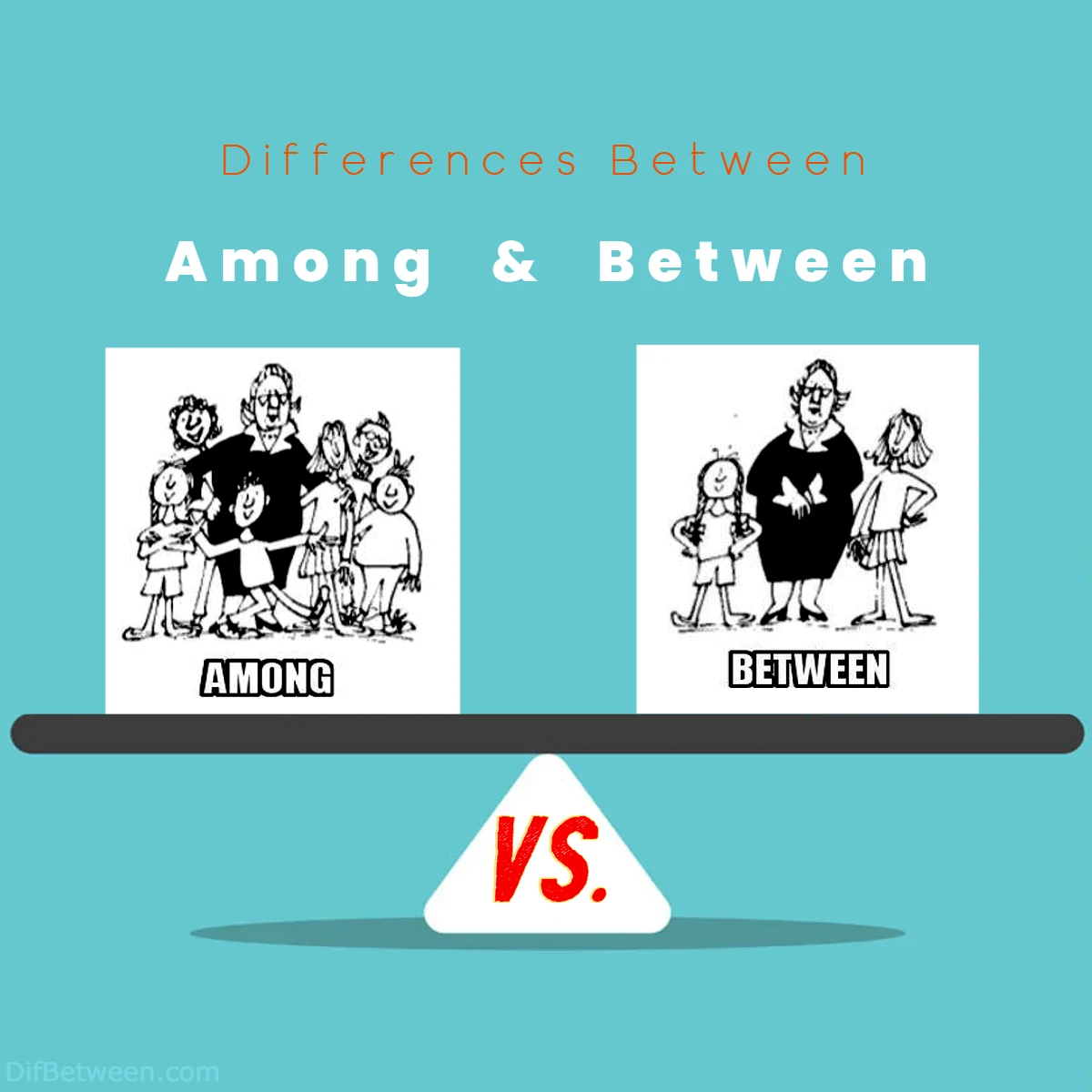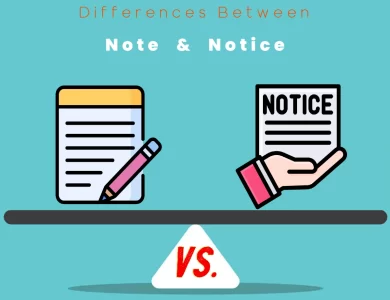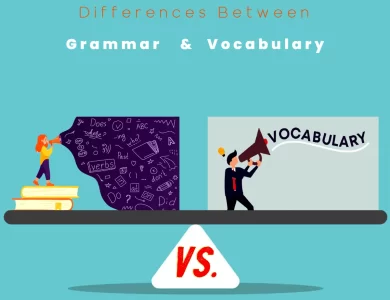
| Aspect | “Among” | “Between” |
|---|---|---|
| Number of Entities | Three or more entities | Two entities |
| Group vs. Individual Interaction | Interactions within a group | Interaction between specific entities |
| Spatial Relationships | Dispersed within a larger space or group | Space or division between two points |
| Mutual Exclusivity | Entities not mutually exclusive | Entities are distinct and exclusive |
| Groups of Two or More (Context Matters) | Context-driven choice | Context-driven choice |
| Collective Nouns (Context Matters) | Context-driven choice | Context-driven choice |
| Variations in Meaning (Context Matters) | Context-driven choice | Context-driven choice |
| Temporal Use | Use in temporal contexts with three or more entities or a sense of inclusion | Use in temporal contexts with two entities or a sense of distinction |
| Inclusivity in Time | May be used inclusively in time-related contexts | Generally used inclusively in time-related contexts |
| Inclusivity in Space | May be used inclusively in spatial contexts | Generally used inclusively in spatial contexts |
| Regional and Idiomatic Variations | Regional and idiomatic expressions may affect usage | Regional and idiomatic expressions may affect usage |
| Written vs. Spoken Language | Greater emphasis on precision in written language | Context plays a more crucial role in interpretation in spoken language |
| Specialized Fields and Technical Jargon | Usage in specialized fields can carry specific implications | Usage in specialized fields can carry specific implications |
| Art of Rhetoric | Choice can affect clarity, emotional impact, and persuasion | Choice can affect clarity, emotional impact, and persuasion |
These little words, while seemingly modest, wield remarkable power in crafting nuanced expressions. By the time you finish reading this blog, you’ll have a firm grasp of when to summon “among” or “between” into action to make your words resonate with precision and clarity.
Differences Between Among and Between
The main differences between “among” and “between” lie in the number of entities involved and the nature of their interactions. “Among” is used when referring to three or more entities or when highlighting interactions within a collective group, while “between” is reserved for scenarios involving two distinct entities or when emphasizing interactions between specific, individual elements. These prepositions play a pivotal role in conveying precise meanings and are instrumental in enhancing the clarity and depth of your communication.
1. Definition and Usage
“Among”
- Definition: “Among” is a preposition that is used to indicate being in, through, or a part of a group or collective. It implies a sense of dispersion within a group.
- Usage: “Among” is typically employed when discussing relationships, distribution, or interaction within a group of three or more entities.
“Between”
- Definition: “Between” is also a preposition, but it signifies the relationship or interaction that occurs when considering two distinct entities or a distinct point in space or time.
- Usage: “Between” is used when discussing the relationship, comparison, or interaction involving two entities or when pinpointing something in a specific location or timeframe.
2. Number of Entities
One of the primary distinctions between “among” and “between” is the number of entities or points involved.
“Among”
- Involves Three or More Entities: “Among” is used when discussing a relationship or distribution within a group consisting of three or more entities.
“Between”
- Involves Two Entities: “Between” is used when focusing on the interaction, comparison, or relationship between two distinct entities or a specific point in space or time.
To illustrate this difference further, let’s consider a few examples:
- Example 1 (Among): “The candy was distributed among the children.” Here, “among” is used because the candy is distributed to a group of children (more than two).
- Example 2 (Between): “The negotiation took place between the two companies.” In this case, “between” is used because the negotiation involves two distinct entities (the two companies).
3. Specificity
The choice between “among” and “between” also depends on the level of specificity you want to convey in your statement.
“Among”
- Implies Indistinct Relationships: “Among” suggests a less specific or more generalized interaction within a group. It doesn’t emphasize individual interactions.
“Between”
- Indicates a Specific Relationship: “Between” emphasizes a specific interaction or relationship between two entities. It is more precise and focused.
Let’s examine this through examples:
- Example 3 (Among): “The secret was shared among friends.” In this case, “among” suggests that the secret was shared within a group of friends without specifying how each friend was involved.
- Example 4 (Between): “A deep understanding exists between the teacher and the student.” Here, “between” implies a specific and possibly unique connection between the teacher and the student.
4. Physical vs. Abstract
Another factor to consider when choosing between “among” and “between” is whether the entities involved are physical or abstract.
“Among”
- Commonly Used for Abstract Entities: “Among” is often used when referring to abstract or intangible things like ideas, feelings, or qualities.
“Between”
- Suitable for Both Physical and Abstract Entities: “Between” can be used for both physical and abstract entities, making it a versatile choice.
Here are examples to illustrate this distinction:
- Example 5 (Among): “Harmony exists among the team members.” In this context, “among” is used to describe the abstract concept of harmony within the team.
- Example 6 (Between): “The boundary between reality and fiction is blurred.” In this case, “between” is used to highlight the relationship between the abstract concepts of reality and fiction.
5. Contextual Examples
Let’s explore more contextual examples to solidify your understanding of when to use “among” and “between.”
- Example 7 (Among): “The cookies were shared among the children at the party.” In this sentence, “among” is used because the cookies were distributed within a group of children, indicating dispersion.
- Example 8 (Between): “The decision to choose between the two job offers was difficult.” Here, “between” is used because the decision involves a choice between two distinct entities, the job offers.
- Example 9 (Among): “The love shared among family members is special.” In this instance, “among” is employed to express the idea of love being dispersed within the family group.
- Example 10 (Between): “The bond between the mother and her child is unbreakable.” “Between” is chosen because it emphasizes the specific and unique relationship between the mother and her child.
6. Common Idioms
Sometimes, “among” and “between” are used in common idiomatic expressions, and their usage can’t be determined solely by the number of entities involved. Here are a couple of examples:
- Idiom 1 (Among): “To each his own” – This idiom means that everyone has their individual preferences or choices within a group. While it contains the word “each,” it uses “among” to convey the idea of choice or preference within a collective.
- Idiom 2 (Between): “Between a rock and a hard place” – This idiom signifies being faced with a difficult choice or dilemma between two undesirable options. It explicitly uses “between” to denote the choice between two entities or situations.
7. Overlapping Groups
Sometimes, you may encounter situations where entities belong to overlapping groups, which can make it a bit tricky to decide whether to use “among” or “between.” Here’s how to approach such scenarios:
“Among”
- When the entities overlap: If the entities are part of the same larger group or category, “among” is the appropriate choice. This emphasizes their presence within the broader group.
“Between”
- When the entities are distinct: If the entities are distinct and do not belong to the same larger group, use “between.” This highlights their individual interaction or relationship.
Let’s delve into examples to clarify this concept:
- Example 11 (Among): “The discussion about the project’s future took place among the different departments.” Here, “among” is used because the discussion involves various departments within the same organization, indicating an overlapping group.
- Example 12 (Between): “The partnership was formed between the marketing team and the design team.” In this instance, “between” is appropriate because the partnership involves two distinct teams that do not overlap in their functions.
8. Measurement and Comparison
“Between” is often preferred when making comparisons or measuring differences between two entities.
“Between”
- Comparing or Measuring: Use “between” when you want to compare, contrast, or measure differences between two entities or points.
Here are some examples to illustrate this usage:
- Example 13 (Between): “The temperature difference between day and night in the desert is extreme.” In this case, “between” is used to emphasize the comparison of temperature variations.
- Example 14 (Between): “There is a noticeable contrast between the performance of the two teams.” “Between” is chosen to highlight the comparison in performance.
9. Multiple Entities within Two Groups
Occasionally, you may need to describe interactions involving multiple entities distributed within two distinct groups. In such cases, both “among” and “between” may be appropriate, depending on the level of specificity you want to convey.
“Among”
- Emphasizes the collective interaction: Use “among” when you want to emphasize the collective interaction within each group without specifying individual interactions.
“Between”
- Emphasizes individual interactions: Use “between” when you want to highlight individual interactions or relationships between entities in the two groups.
Consider these examples:
- Example 15 (Among): “The gifts were distributed among the students and teachers.” Here, “among” suggests that the gifts were shared within the collective groups of students and teachers, without specifying individual interactions.
- Example 16 (Between): “Meaningful conversations took place between the students and their mentors.” “Between” is employed to emphasize the individual interactions between students and their respective mentors.
10. Time and Chronological Context
When discussing events or actions in a chronological or temporal context, you can use “between” to indicate specific points in time.
“Between”
- Temporal Context: Use “between” when referring to actions or events occurring at specific points in time or during specific time intervals.
Here are examples related to time:
- Example 17 (Between): “The meeting is scheduled between 2:00 PM and 4:00 PM.” “Between” is used to specify the time frame for the meeting.
- Example 18 (Between): “The changes occurred between yesterday and today.” Here, “between” highlights the specific time span during which the changes occurred.
11. Exceptions and Regional Variations
As with many aspects of language, there can be exceptions and regional variations in the usage of “among” and “between.” Language is dynamic, and idiomatic expressions can vary between different English-speaking regions. It’s essential to be aware of local conventions and dialects when using these words.
For instance, in some dialects or colloquial speech, people might use “between” more liberally, even when discussing interactions within larger groups. Conversely, in formal writing or specific contexts, “among” might be used in cases where “between” seems more intuitive.
12. Relationships and Trust
Consider the emotional and trust-based aspects of relationships. In these contexts, “between” and “among” can convey distinct shades of meaning.
“Among”
- Shared or Group Trust: Use “among” when discussing trust or relationships within a group or collective. It emphasizes a sense of shared trust among multiple individuals.
“Between”
- Individual Trust: Use “between” when focusing on trust or relationships between specific individuals or entities. It highlights trust on an individual or one-on-one basis.
Examples to illustrate this difference:
- Example 19 (Among): “Trust among teammates is crucial for a successful project.” Here, “among” underscores the importance of trust within the entire group of teammates.
- Example 20 (Between): “There is a deep bond of trust between the CEO and the company’s founders.” “Between” emphasizes the specific trust relationship between the CEO and the founders.
13. Spatial Relationships
Spatial context also plays a role in choosing between “among” and “between.” Think about physical location or placement.
“Among”
- Indistinct Spatial Arrangement: Use “among” when entities are dispersed within a space or area without emphasizing specific individual locations.
“Between”
- Specific Spatial Separation: Use “between” when entities are situated in distinct and identifiable locations, highlighting the separation.
Examples for spatial context:
- Example 21 (Among): “The flowers grew among the trees in the forest.” Here, “among” suggests that the flowers are scattered throughout the forest without specifying individual locations.
- Example 22 (Between): “The path runs between the two hills.” “Between” is employed to indicate the specific location of the path, situated in the space between the hills.
14. Frequency and Distribution
Consider instances where you want to discuss how often something occurs or how it is distributed.
“Among”
- Frequency or Distribution in a Group: Use “among” when describing how something is distributed or occurs within a group, emphasizing collective frequency.
“Between”
- Frequency or Distribution between Two Entities: Use “between” to describe how something is distributed or occurs specifically between two entities, highlighting their interaction.
Examples to illustrate this concept:
- Example 23 (Among): “Happiness is distributed among the residents of this peaceful town.” Here, “among” is used to indicate the distribution of happiness among the town’s residents as a collective.
- Example 24 (Between): “The negotiation for resource allocation occurs between the project manager and the department head.” “Between” emphasizes that the negotiation happens specifically between the project manager and the department head.
15. Formal vs. Informal Usage
The choice between “among” and “between” can also be influenced by the formality of your writing or speech.
“Among”
- Formal or Neutral: “Among” is generally considered more formal and neutral in usage, making it suitable for academic writing, professional communication, or formal speeches.
“Between”
- Casual or Conversational: “Between” can be used in casual or conversational contexts. It may be more commonly used in everyday conversations.
While both words can be used in various contexts, understanding their formality can help you tailor your language to the appropriate tone.
16. Multiple Instances of “Between”
In some cases, you might encounter sentences with multiple instances of “between.” It’s important to clarify the relationships between each pair of entities.
“Between X and Y”
- Comparing Two Entities: “Between X and Y” typically implies a comparison or relationship between X and Y.
“Between X, Y, and Z”
- Comparing All Entities: “Between X, Y, and Z” suggests a collective comparison or relationship between all three entities.
Consider the following examples:
- Example 25 (Between X and Y): “The competition was fierce between John and Sarah.” Here, “between John and Sarah” emphasizes the competition and comparison between these two individuals.
- Example 26 (Between X, Y, and Z): “A strong bond exists between Jack, Jill, and Mary.” In this case, “between Jack, Jill, and Mary” implies that a collective bond exists among all three individuals.
17. Regional Variations
English usage can vary by region and dialect. It’s worth noting that in some English-speaking regions or dialects, there may be variations in the way “among” and “between” are used. Local conventions and idiomatic expressions can influence word choice. Therefore, it’s essential to be aware of regional variations when communicating in English.
Conclusion
In conclusion, mastering the proper use of “among” and “between” involves considering factors such as the number of entities, specificity, trust, spatial context, frequency, formality, and regional variations. By understanding these nuances, you can confidently choose the right word to convey your intended meaning in various contexts, enhancing your effectiveness in both written and spoken communication.
FAQs
The fundamental difference is the number of entities involved. “Among” is used with three or more entities, emphasizing interactions within a group, while “between” is employed for two entities, highlighting interactions or distinctions between them.
While “among” is typically used with three or more entities, it can occasionally be used with two when the emphasis is on their collective identity or interactions within a broader context.
Yes, there can be. “Among” is often used when entities are dispersed within a larger space or group, while “between” indicates the space or division separating two specific points.
For time-related scenarios, “among” is used with three or more entities or to convey a sense of inclusion, while “between” is used with two entities or to imply a sense of distinction or separation.
Yes, idiomatic expressions like “between you and me” and “among friends” use these prepositions in unique ways. “Between a rock and a hard place” is another common expression indicating a difficult situation.
Absolutely! Context plays a crucial role in determining which preposition to use, especially in cases involving collective nouns, groups of two or more, or variations in meaning.
To communicate with precision, consider the number of entities, the nature of their interactions, the spatial context, and the intended message. Select “among” for groups and inclusivity and “between” for distinctions and separations.
Practice, context-awareness, and a keen understanding of these prepositions’ nuances are key to mastering their usage. Reading and exposure to diverse linguistic contexts can also be immensely helpful.
Read More:
Contents
- Differences Between Among and Between
- 1. Definition and Usage
- 2. Number of Entities
- 3. Specificity
- 4. Physical vs. Abstract
- 5. Contextual Examples
- 6. Common Idioms
- 7. Overlapping Groups
- 8. Measurement and Comparison
- 9. Multiple Entities within Two Groups
- 10. Time and Chronological Context
- 11. Exceptions and Regional Variations
- 12. Relationships and Trust
- 13. Spatial Relationships
- 14. Frequency and Distribution
- 15. Formal vs. Informal Usage
- 16. Multiple Instances of “Between”
- 17. Regional Variations
- Conclusion
- FAQs






